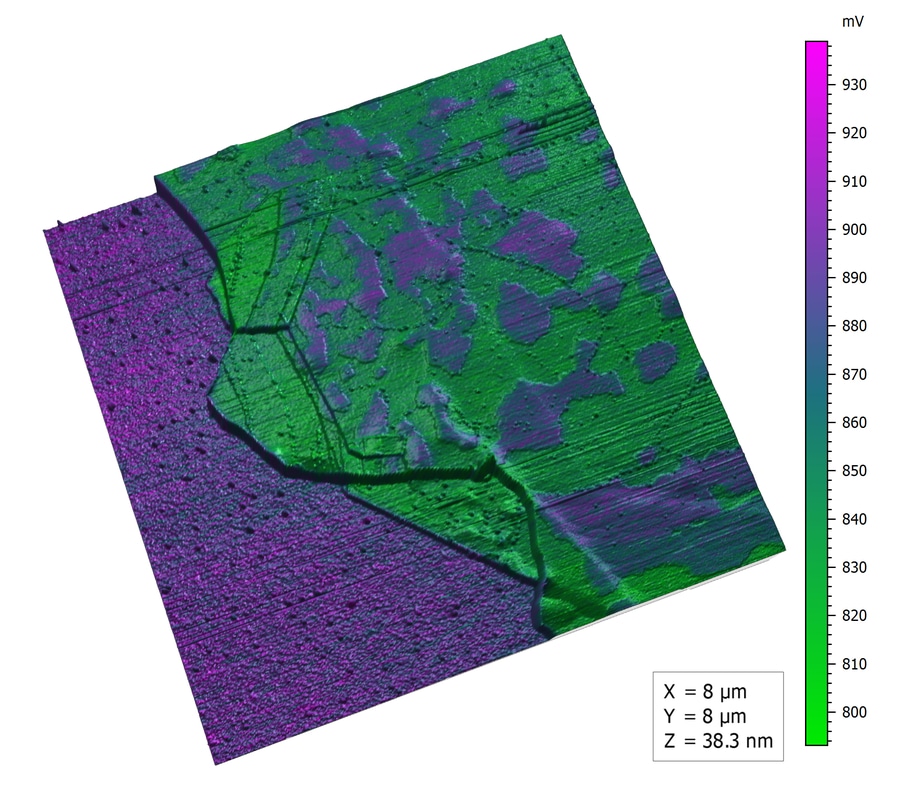
#White Papers
Kelvin probe force microscopy (KPFM)
Theory and application
Kelvin probe force microscopy (KPFM), also known as surface potential microscopy, is one member of a suite of electrical characterization methods available in atomic force microscopes. It maps the contact potential difference (CPD) between a surface and the cantilever, containing information about the surface potential and work function. The work-function is defined in solid-state physics as the energy needed to remove an electron from the Fermi level of a solid to the vacuum and is thus, a surface property and not related to the bulk.
This article describes how KPFM works, and details several examples of KPFM measurements.


